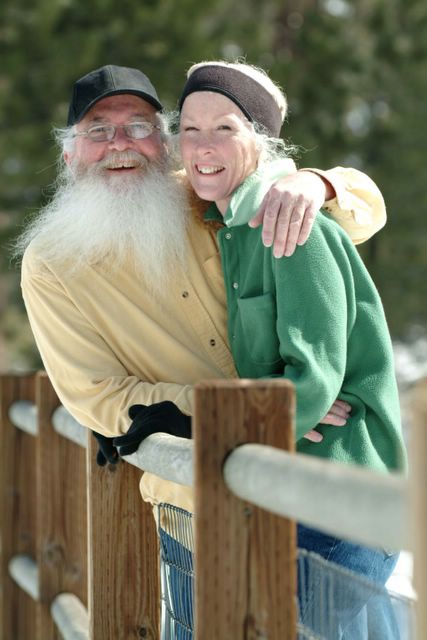Buddha and the Mushroom Click on photo to enlarge - © 2008 jim otterstrom
Click on photo to enlarge - © 2008 jim otterstrom
Fellow blogger, The Contrary Goddess, gave me a "tiny challenge" I couldn't resist.
"Name 100 species which live in your neighborhood", she asked.
Well, here's 117 native (or migratory) species which are residents or visitors to our own yard, and I've barely scratched the surface of the bird and insect visitors.
As I find the time I'll be adding the scientific names to the list below and will include links to various botanical websites for plant profiles.
Earth Home Garden Species
1. Common Yarrow
(Achillea millefolium)
2. Wild Onion
(Allium sp.)
3. Indian Hemp
(Apocynum cannabinum)
4. Rock-Cress
(Arabis pulchra)
5. Prickly Poppy
(Argemone munita)
6. Crimson Columbine
(Aquilegia formosa)
7. Narrow Leaf Milkweed
(Asclepias fascicularis)
8. Green Striped Mariposa Lily
9. Wild Morning-Glory
10. Indian Paintbrush
11. Ash Gray Paintbrush
12. Thistle
13. Miner’s Lettuce
14. Virgin’s Bower (Pipestem)
15. Wild Hyacinth (Blue Dicks)
16. Fireweed
17. California Fuschia
18. Stream Orchid
19. Fleabane
20. Yerba Santa
21. California Buckwheat
22. Pine Buckwheat
23. Sulfur Flower (Sulfur-Color Buckwheat)
24. Wright’s Buckwheat
25. Western Wallflower
26. California Poppy
27. Wild Geranium
28. Gilia
29. Rydberg’s Horkelia
30. Western Blue Iris (Blue Flag)
31. Granite Gilia (Prickly Phlox)
32. Mountain Aster
33. Humboldt Lily
34. Lemon Lily
35. Blue Flax
36. Brewer’s Lupine
37. Grape Soda Lupine
38. Dwarf Lupine
39. Giant Lupine
40. Tarweed
41. Pineapple Weed
42. Coyote Mint
43. Coyote Tobacco
44. California Evening Primrose
45. Anderson’s Penstemon
46. San Bernardino Beardtongue
47. Firecracker Penstemon
48. Bumble-Bee Penstemon
49. Scarlet Penstemon
50. Mountain Bugler
51. Showy Penstemon
52. Desert Blue Bells
53. Mountain Phacelia
54. Sticky Cinquefoil
55. Buttercup
56. Southern Goldenrod
57. Apricot Mallow
58. White Hedge Nettle
59. Stinging Nettle
60. Hedgehog Cactus
61. Beaver-Tail Cactus
62. Cane Cholla (Snake Cholla)
63. Prickly-Pear Cactus
64. Utah Service-Berry
65. Greenleaf Manzanita
66. Silver Wormwood
67. Great Basin Sage
68. Rubber Rabbitbrush
69. California Flannelbush
70. Fremont’s Bushmallow
71. Western Choke-Cherry
72. Antelope Bush
73. Sierra Currant
74. Rose Sage
75. Apricot Mallow
76. Snowberry
77. White Fir
78. Incense Cedar
79. Mountain Mahogany
80. Western Juniper
81. Jeffrey Pine
82. Singleleaf Pinyon Pine
83. Quaking Aspen
84. California Black Oak
85. Pygmy Nuthatch
86. White-Breasted Nuthatch
87. Mountain Chickadee
88. Western Bluebird
89. Steller’s Jay
90. Northern Flicker
91. White-Headed Woodpecker
92. Anna’s Hummingbird
93. Rufous Hummingbird
94. Western Tanager
95. Wilson’s Warbler
96. Yellow-Rumped Warbler
97. Mourning Dove
98. Acorn Woodpecker
99. Hairy Woodpecker
100. Violet-Green Swallow
101. American Robin
102. Black-Headed Grosbeak
103. Rufous-Sided Towhee
104. Band-Tailed Pigeon
105. Lesser Goldfinch
106. Dark-Eyed Junco
107. Cassin’s Finch
108. Mourning Cloak Butterfly
109. Giant Swallowtail Butterfly
110. Painted Lady Butterfly
111. California Sister Butterfly
112. Monarch Butterfly
113. Western Gray Squirrel
114. California Ground Squirrel
115. Merriam Chipmunk
116. Western Toad
117. Western Terrestrial Garter Snake
Labels: animals, Big Bear, birds, community, diversity, ecology, flowers, habitat, insects, mammals, native flora, native plant garden, pollinators, San Bernardino Mountains, toads, wildflowers, wildlife



































